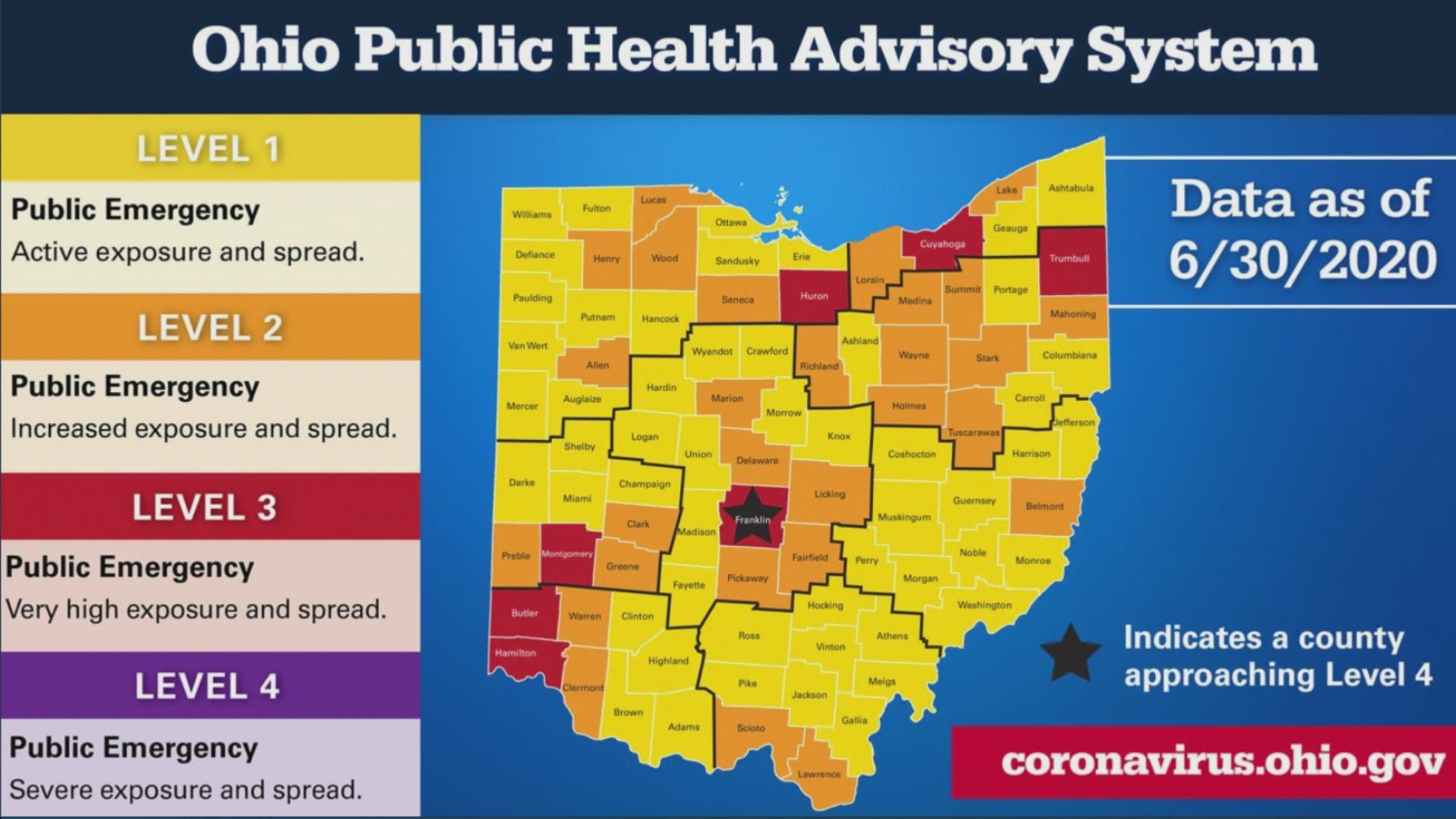COLUMBUS, Ohio — Gov. Mike DeWine on Thursday unveiled a new system for measuring the dangers of the coronavirus in the state of Ohio, meant to identify hot spots for the disease by county.
The public health advisory system will have degrees of levels and is determined by the following seven indicators:
- New cases per capita: Triggered when a county has an average of 50 cases per 100,000 people over a two-week period
- Sustained increase in new cases: Triggered by a five-day period of sustained growth
- Proportion of cases not congregate cases: Triggered when at least half of new cases originate from non-congregate settings during at least one of the past three weeks
- Sustained increase in ER visits: Triggered by an increase in COVID-19-related emergency room visits over a five-day period
- Sustained increase in outpatient visits: Triggered by an increase in COVID-19-related visits to outpatient settings (such as telehealth appointments) over a five-day period
- Sustained increase in new COVID-19 hospital admissions: Triggered by a five-day period of sustained growth in new admissions
- ICU bed occupancy: Triggered when at least 80% of a county's ICU beds are occupied over at least three of the last seven days
For however many indicators a county meets, they will be placed into one of four color-coded levels to display the possible risks involved:
- Level 1 (yellow, 0-1 indicators): Displays active community spread; all current health orders should be followed
- Level 2 (orange, 2-3 indicators): Displays increased exposure and spread; besides following all current orders, residents should also exercise a "high degree of caution"
- Level 3 (red, 4-5 indicators): Displays "very high" exposure and spread; residents should limit activities as much as possible
- Level 4 (purple, 6-7, indicators): "Severe" exposure and spread; only leave home for supplies and services

